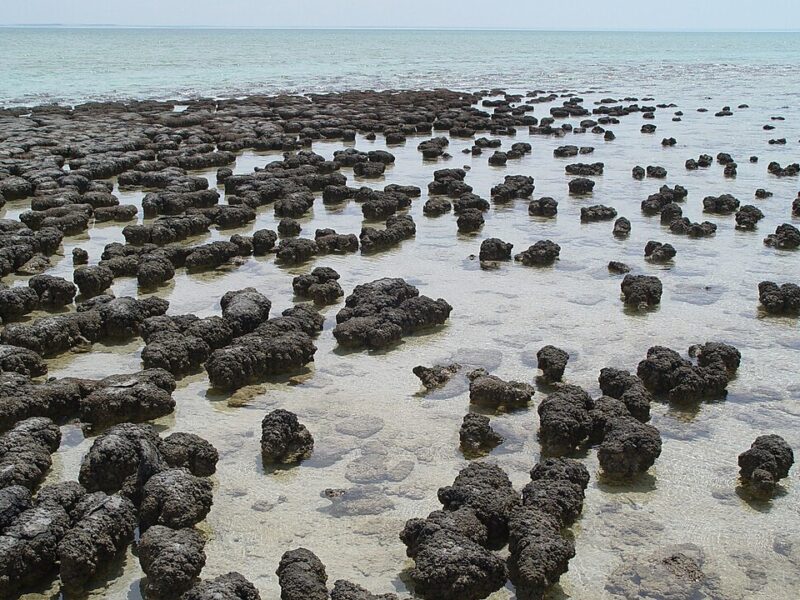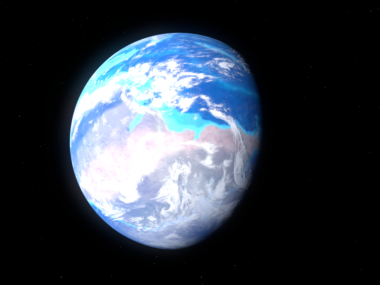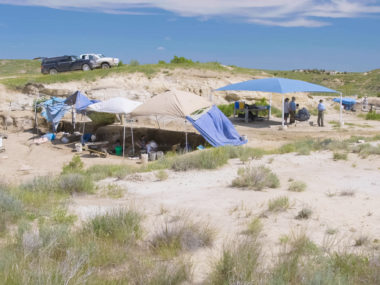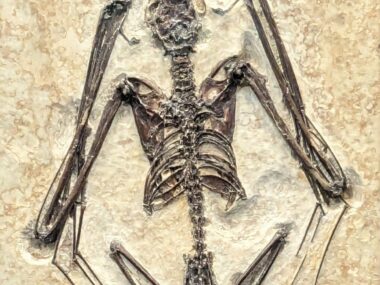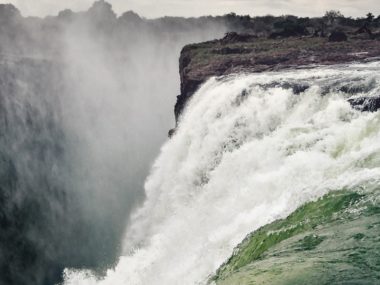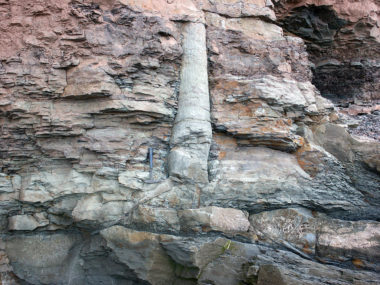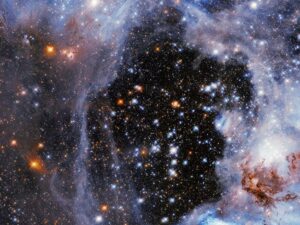By now, we have a well-rounded understanding of the Precambrian record from an old-earth perspective, as well as its unsolved problems. It is now time for us to see how we interpret the Precambrian record from a young-earth perspective.
Back to Perspectives
Young-earth geologists do not limit themselves to the same starting assumptions as their old-earth colleagues. Old-earth geologists interpret the data based on the principle of methodological naturalism. This idea states that everything must form by purely natural processes. This obviously restricts their explanations. Within this paradigm, even if we witnessed supernatural events every day, old-earth proponents would have no way to determine whether or not they happened.
Young-earth geologists, on the other hand, recognize that a record exists of God intervening in the physical world at various times throughout history. This does not mean that they attribute any unknown to an act of God. They are, however, open to the possibility of His involvement.
The Bible is not a “need” for a miraculous explanation to fill in the gaps in our knowledge. It is in fact our starting point. Just because God could act in a certain way at a particular time does not automatically mean that He did. Attributing God’s intervention to a certain phenomenon is based on historical evidence of such events recorded in His Word. For example, we know that God created “the heavens, earth, sea, and everything in them” in the span of six day-night cycles. We know, too, that God caused a global Flood and, through which, He ensured the preservation of life on earth.
For each of these instances, God had a special purpose for His intervention and manipulation of the physical world.
When Did the Precambrian Record Form?
It’s important to remember that up until the mid-19th century or so, the majority of geologists still accepted a young earth and/or a global Flood.1
These were the days before Charnia, Dickinsonia and our other Ediacaran friends became known to science. Scientists had not even discovered stromatolite fossils yet. At the time, everyone assumed that the Precambrian layers were void of life. As such, researchers traditionally thought these formed during Creation Week.2 Of course, this soon changed when stromatolites, bacteria themselves, algae, sponges, and Ediacaran critters stole the spotlight. How can we have fossilized (e.g. dead) organic life before the fall of Adam?
To work around this theologic issue, some young-earth geologists in the 90’s began to play with an idea. What if much, if not most, of the Precambrian record formed instead during the Flood?3 These researchers believe that the presence of fossils or other traces of biological life preserved in the rock record should be a clear sign that we are looking at Flood rocks.
Other geologists arrived at a different conclusion. In the 90’s, Drs. Steve Austin and Kurt Wise were trying to correlate different parts of the geologic record of the American southwest to specific periods of time recorded in Scripture. One of the things they wanted to address was how to distinguish rocks formed during Creation Week from those formed during the Flood. This would turn out to have significant implications to the placement of the Precambrian within young-earth history. Dr. Austin and Dr. Wise published their conclusions in a paper presented at the International Conference on Creationism in 1994.4 They identified five crucial criteria. They argued these tools could distinguish the boundary between rocks formed before the Flood and those formed during the Flood:
An Erosional Discontinuity
Since the Flood began suddenly and catastrophically, it was reasoned that it would reasonably produce very noticeable erosion features caused by the destructive movement of fast-flowing water over the earth’s surface.
An Age Discontinuity
As per this immense erosion we should expect to see in pre-Flood rocks, the earliest Flood rocks should also contain some of the original characteristics of the pre-Flood rocks from which they formed. For example, boulders that eroded from their host rock and redeposited above the erosional discontinuity described above.
A Tectonic Discontinuity
After Creation Week but before the Flood, Austin and Wise think there would have been very little tectonic activity. But the Book of Genesis records that the Flood began when all the fountains of the great deep burst forth. While the exact nature of these fountains is still up for debate, the text seems to clearly describe deep sea crustal movements—in other words, tectonic activity. Therefore, Austin and Wise suggest that the earliest Flood deposits should be associated with an abrupt turnover to intense tectonic activity.
A Sedimentary Discontinuity
Between Creation and the Flood, Austin and Wise envision the pre-Flood world as experiencing the slow and gradual accumulation of sediment similar to what we see happening today. This changed when the Flood began. Therefore, we should see a switch from the slow and gradual depositing of land-derived sediments (e.g. sandstone, mudstone) in pre-Flood rocks to rapid depositing of marine muds (e.g. limestone) as evidenced in Flood rocks.
A Fossil Discontinuity
We generally envision the accumulation of sediment in the pre-Flood era as slow and gradual. Therefore, Austin and Wise argued that little should exist in the way of a fossil record until the time of the Flood. The only organisms we should find in pre-Flood rocks might include algae, bacteria, pollen, or spores. The appearance of larger, more complex fossil organisms, then, should mark Flood rocks.
Application: Grand Canyon Region
Austin and Wise focused these criteria on the Grand Canyon area. They decided that the Great Unconformity most likely represented the beginning of the Flood. Most of the Precambrian layers are situated below the Great Unconformity. They include many of the deposits containing stromatolite fossils, which thrived as a flourishing reef until the Flood’s start. The Precambrian deposits which formed early during the Flood would include the Ediacaran fauna. These also lie above the Great Unconformity. By this logic, the majority of the Precambrian record would have formed during Creation Week. Some of it, however, could have accumulated on the ocean floor between the end of Creation Week and the Flood’s beginning.
Most young-earth geologists agreed with the conclusions put forward by Austin and Wise. Creationists now predominately embrace the worldwide Great Unconformity as the pre-Flood/Flood boundary. Fossil-bearing layers above it are from the Flood and its aftermath.
Correlation, Correlation, Correlation
Austin and Wise’s work was a big step in the development of a young-earth understanding of the Precambrian. There are, however, some factors for which their model does not account. We should note that each of these criteria may apply multiple times throughout the geologic record. Other factors we must consider include the magnitude and relative timing of geological events and processes. To this we must add the additional types of geological features these events and processes produced. We should also take into consideration the chemistry, heating events, and tectonic events associated with specific rocks. For example, consider the miles-worth of erosion corresponding to the Great Unconformity. The processes involved in causing this erosion could sweep away sediments and redeposit them elsewhere, hence invalidating the sedimentary discontinuity.
One particularly important correlation we must point out concerns those radiometric age clusters we discussed earlier (see Part II). To recap, radiometric ages obtained from Precambrian rock samples tend to average around specific ages. 2.70 billion years, 1.85 billion years, 1.05 billion years, and 0.60 billion years. We do not accept these dates as the passage of real, absolute time. Yet they nevertheless demonstrate that worldwide “thermal-tectonic events” occurred. These events are known as the Kenoran, Hudsonian, Grenvillian, and the Pan-African. The “ages” associated with them can provide us with crucial information. This pertains to the history of when Earth’s rocks were heated up and cooled in Precambrian history.
For these reasons, why most young-earth creationists place the majority of the Precambrian within Creation Week. Understanding this, we can see how these thermal-tectonic events help us develop a model that correlates the Precambrian record with the Biblical record.
A Young-Earth Model of the Precambrian
In order to place the Precambrian in a young-earth creationist context, we must be able to explain the general patterns contained within its rocks. Some of the most recent and most comprehensive development of a young-earth model of the Precambrian is the work of geologists Andrew Snelling and Harry Dickens. The model described below is based primarily on the model they laid out in their technical paper Precambrian Geology and the Bible: a Harmony.5,6
The heating events mentioned above form the backbone of their model. Dr. Snelling and Dickens suggest that these heating events were caused by God, and they set off major geological changes during the early days of Creation and the beginning of the Flood. These processes were not destructive to life because they all happened before God made plants, animals, or humans. They occurred while God was still fashioning the land for habitation (Isaiah 45:18). Each time these heating events happened, the radiometric “ages” that scientists measure were reset.

Please note that the days of Creation referenced below refer to regular day-night cycles.
Day 1 – Early Archean
“For they deliberately overlook this fact, that the heavens existed long ago, and the earth was formed out of water and through water by the word of God.”
2 Peter 3:5 ESV
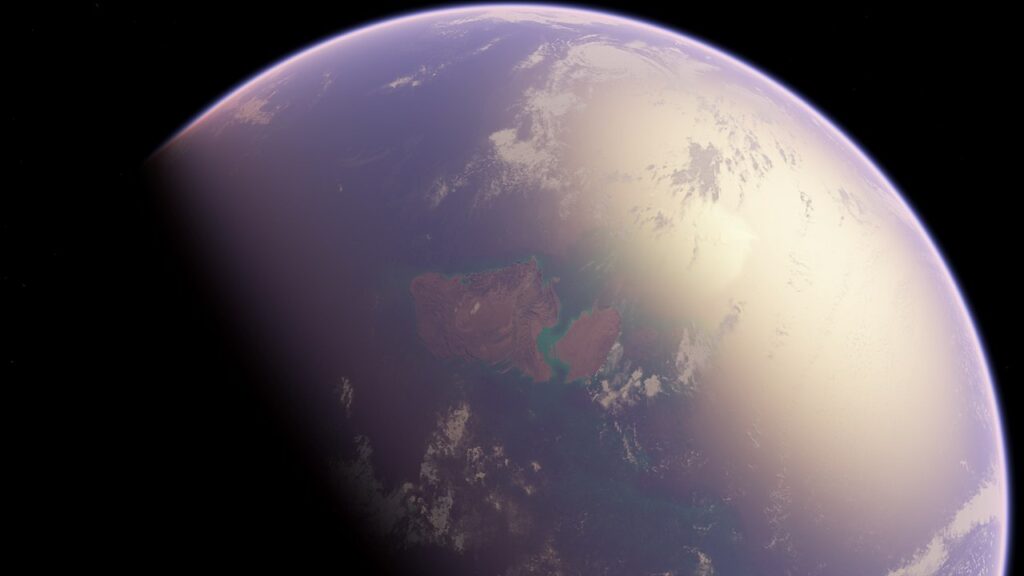
In the beginning, on Day 1, a vast, global ocean covered the earth (Genesis 1:2). Genesis is unclear as to how God initially created the earth. Did it originate as a water ball, or did God cover it in water by some other means?
The Hadean “layers” present an interesting dilemma, given the absence of any direct evidence for their existence. As a result, Snelling and Dickens don’t distinguish the “Hadean” as another time period, like their old-earth colleagues. Instead, they propose the zircon crystals from Jack Hills, Australia resulted from the events of Day 1 since they inhabit Archean rocks.
The Spirit of God hovered over a relatively smooth, watery ball. No mountains or other topographic features were visible above the ocean’s surface. But volcanism and other geologic activity gurgled beneath the waters. This accounts for the Archean granites and other igneous rock. Stromatolites dating to this brief period of time may not have been formed by bacteria. Instead, they may have been the result of inorganic processes, such as those resulting from hydrothermal vents and upwelling springs.
Day 2 – Paleoproterozoic
“And God said, ‘Let there be an expanse in the midst of the waters, and let it separate the waters from the waters.’ And God made the expanse and separated the waters that were under the expanse from the waters that were above the expanse. And it was so. And God called the expanse Heaven. And there was evening and there was morning, the second day.”
Genesis 1:6-8 ESV
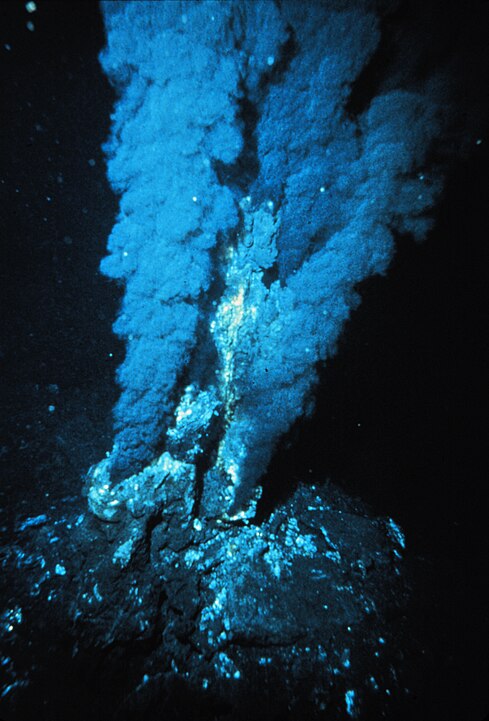
On Day 2, the earth is still a water ball. Genesis 1:7 records the separation of the waters below from the waters above. This may have produced clouds that resulted from volcanic and hydrothermal activity.
The activity of this timespan is more likely the result of upward movements of waters within the earth. Paleoproterozoic craters from asteroids or comets, such as the Sudbury and Vredefort craters, formed on this day. These were possibly created from material ejected from, and which subsequently fell back, to the earth.
As an interesting sidenote, this is around the time of the formation of the rocks from which the presidents of Mount Rushmore would be carved. The metamorphic rocks visible in the Black Hills region today originated as sediments deposited on the ocean floor. Then, a substantial volume of molten rock commenced an upward journey from the depths of the Earth’s crust. During its cooling process, this molten mass underwent transformation into the granite that constitutes the foundational structure of the Black Hills today.
Day 3 – Mesoproterozoic
“And God said, ‘Let the waters under the heavens be gathered together into one place, and let the dry land appear.’ And it was so. God called the dry land Earth, and the waters that were gathered together he called Seas. And God saw that it was good.”
Genesis 1:9-10 ESV
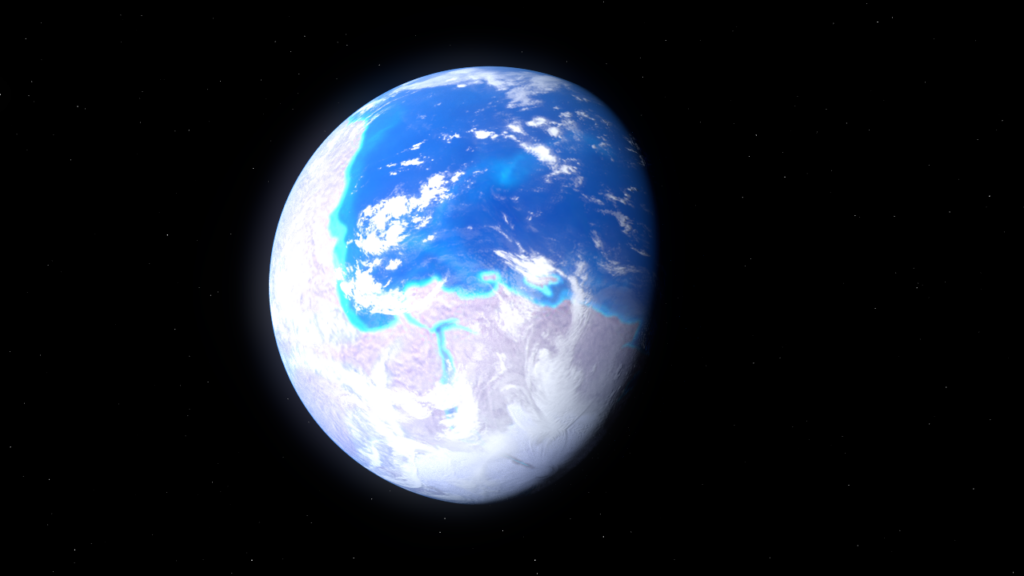
On Day 3, God uplifted our pre-Flood supercontinent, Fred, from beneath the global ocean’s surface (Genesis 1:9). Waters rushing off this landmass eroded and transported thousands of feet of sediment offshore. This formed what would later become many of our Precambrian sedimentary rocks. Dickens and Snelling correlate this with the Grenvillian heating event and large scale mountain building that happened in association with it.
Rain didn’t fall until after the creation of man (Genesis 2:5-6). This means that the early earth had a very different water cycle than the one we are familiar with today. Springs upwelled freshwater from beneath the earth’s surface, and may have provided a suitable habitat for the first organic stromatolites to flourish.
Day 4 – Mesoproterozoic

God largely restricted His acts of creation to the heavens on Day 4. This does not have much impact on Earth-based geology. However, the creation of the Sun and Moon would make it possible for ocean tides to occur for the first time. These tides could potentially have left geologic evidence behind. However, the catastrophic erosion during the Flood may also have destroyed any such evidence, if it existed.
Post-Creation Week/Pre-Flood Era – Early Neoproterozoic

The Bible is silent as to what geologic evidence could have formed between Day 3 and the Flood’s beginning. This could mean that the pre-Flood world was a geologically quiet period of time. However, we should not necessarily assume that geologic activity was not occurring at all. Paleontologist Dr. Kurt Wise has proposed that hot water reefs dominated by stromatolites existed around the perimeters offshore of the pre-Flood landmasses.7 These not only provided habitat for the colonies of cyanobacteria that created them, but also created sheltered lagoons where Ediacaran fauna could flourish while remaining geographically segregated from the open ocean. Dr. Snelling has pointed to several lines of evidence for earthquakes, volcanic eruptions, and other geologic catastrophes during the pre-Flood era.8 However, these occurred in the deep ocean environments of the time, far from where people and land animals lived.
Early Noahic Flood – Neoproterozoic (Cryogenian)
“In the six hundredth year of Noah’s life, in the second month, on the seventeenth day of the month, on that day all the fountains of the great deep burst forth, and the windows of the heavens were opened.”
Genesis 7:11 ESV
The Fountains
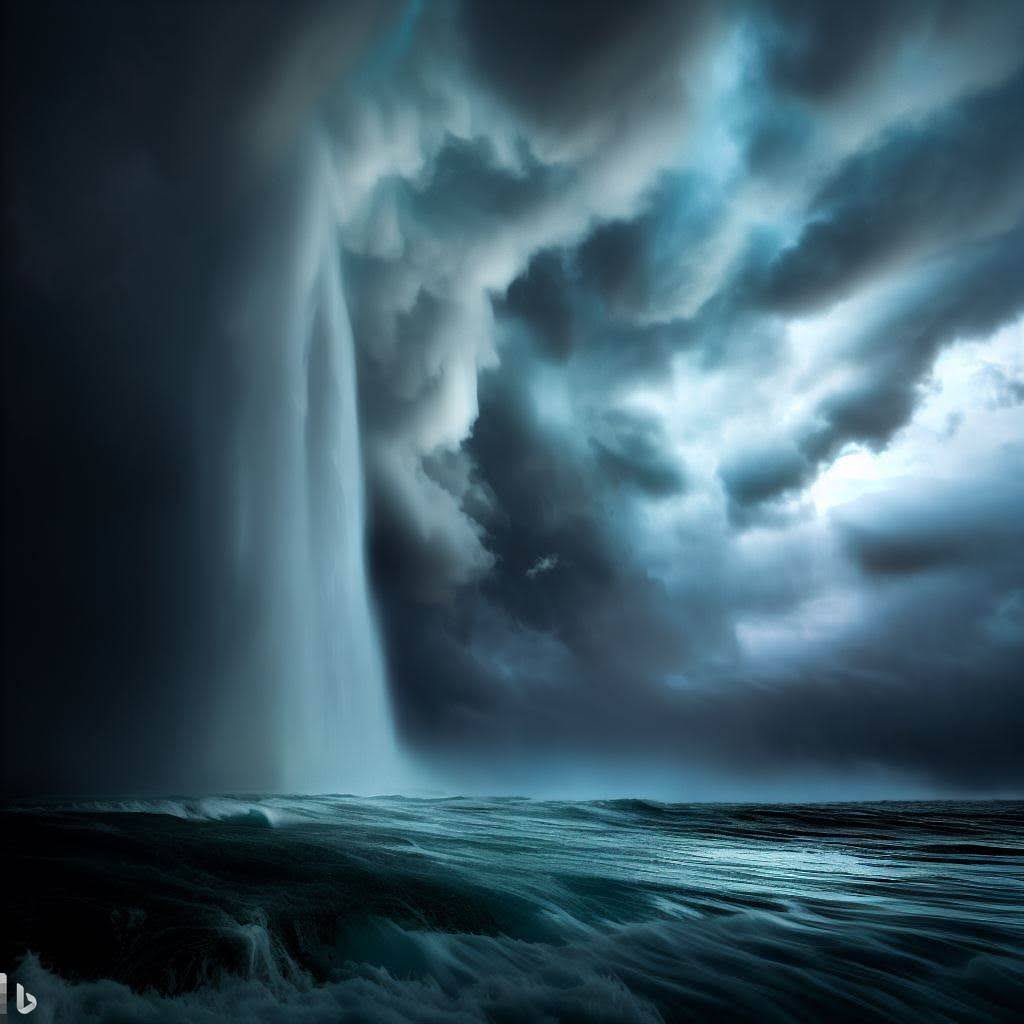
When “fountains of the great deep” burst forth and torrential rain fell from the heavens (Genesis 7:11), it interrupted centuries of geological silence. This was the beginning of the Noahic Flood.
The Flood narrative indicates that much of the water that gave rise to this cataclysm was primarily oceanic in source. The “bursting forth” implies a rifting and fracturing of the earth’s crust. Dickens has identified possible evidence for a “fountain” site along what is now the Darling Fault, which is on the edge of Western Australia.9 Volcanic activity and land-based springs may also have accompanied these “fountains.” It is possible that this rifting event is the same phenomenon that old-earth geologists dub the Pan-African event, which caused Fred, our pre-Flood supercontinent, to break apart. Secular literature has described this geologic upheaval as one of the largest of its kind known to ever occur on earth.10
Rainfall
Meanwhile, the 40 days and nights of rainfall (Genesis 7:4) contributed to the cataclysm as well. It would have caused mass flows to sweep down from the pre-Flood uplands.11,12 These eroded away great quantities of sediment and peneplaned the pre-Flood land surface into what we know today as the Great Unconformity. The eroded material dumped into what would have been the ocean along the edge of the continent at that time, still visible today as the diamictite deposits that occur widespread around the world. The incredible erosion occurring at this time during the Flood was not favorable for the preservation of fossils.
Craters
Many craters, like the Acraman Crater, also formed around this time. They were likely created by material ejected from the “fountains” that fell back to earth, or extraterrestrial debris ejected from Mars, which may have also been flooding at the same time.13 Just as Adam’s sin affected the universe (Romans 8:18–25), God’s judgment at the time of the Flood may have extended beyond planet earth itself.
Interestingly, the creation of the Great Unconformity is followed by the burial of Ediacaran fossils and what has been described as “one of the most dramatic global [sea level rises] in Earth history.”14 This would have been the successive march of the floodwaters until all of the pre-Flood earth was submerged once again, as it had been in the beginning of time.
The Future of Dickens and Snelling’s Model
Dickens and Snelling’s model of Precambrian geology is by far one of the most comprehensive understandings of the topic yet proposed by young-earth geologists. However, it has not been without its critics, those being other young-earth creationists who have a different understanding of the Precambrian geologic record. In the final part of this series, we will look at criticisms offered against this model and what research can be done to improve the model in the future.
Acknowledgements
The author wishes to thank Harry Dickens for his involvement in the research and development of this article.
Pilgrimage Through the Precambrian Series
Precambrian Peculiarities (Part II)
The Story of Ancients (Part III)
Chinks in One’s Crust (Part IV)
The Future of the Precambrian Past (Part VI)
Footnotes
- Johns, W. H. (2016). Scriptural Geology, Then and Now. Answers Research Journal, 9, 317-337. ↩︎
- Snelling, A.A. (1983). “Precambrian rocks: What is the Creationist View?” Creation 6(1):42-46. ↩︎
- Snelling, A. (1983). Precambrian rocks: What is a creationist view? Creation Ex Nihilo, 6(1), 42–46. ↩︎
- Austin, Steven A. and Wise, Kurt P. (1994) “The Pre-Flood / Flood Boundary: As Defined in Grand Canyon and East Mojave,” Proceedings of the International Conference on Creationism: Vol. 3 , Article 5. ↩︎
- Dickens, H. and Snelling, A.A. 2008. “Precambrian geology and the Bible: a harmony.” Journal of Creation 22(1):65–72. ↩︎
- Dickens has applied this model specifically to the North America continent in the following paper: Dickens, H. (2018). “North American Precambrian geology–A proposed young earth biblical model.” In Proceedings of the Eighth International Conference on Creationism, ed. J.H. Whitmore, pp. 389–403. Pittsburgh, Pennsylvania: Creation Science Fellowship. ↩︎
- Wise, K. (2003). “The Hydrothermal Biome: A Pre-Flood Environment,” Proceedings of the International Conference on Creationism: Vol. 5, Article 32. ↩︎
- Snelling, A. (2020, April 18). “Were There Volcanoes, High Mountains, or Earthquakes Before the Flood?” Answers in Genesis. ↩︎
- Dickens, H. (2018). “Evidence for Flood fountains adjacent to the cratonic margin of southwestern Australia.” Journal of Creation, 32(1). ↩︎
- Rino, S.; Kon, Y.; Sato, W.; Maruyama, S.; Santosh, M.; Zhao, D. (2008). “The Grenvillian and Pan-African orogens: World’s largest orogenies through geologic time, and their implications on the origin of superplume.” Gondwana Research. 14 (1–2): 51–72. ↩︎
- Dickens, H. and Hutchison, A. “The Flood Swept Away Pre-Flood Lives!” Journal of Creation Theology and Science Series C: Earth Sciences 11:1-4. ↩︎
- Dickens, H. (2017). “Colossal Water Flows During Early Creation Week and Early Flood.” Answers Research Journal. 10, 221–235. ↩︎
- Austin and Wise, 1994 (Footnote 4) ↩︎
- Karlstrom, Karl E., James W. Hagadorn, George E. Gehrels, William Matthews, Mark D. Schmitz, Lauren Madronich, Jacob Mulder, Mark Pecha, Dominique Giesler, and Laura J. Crossey. 2018. “Cambrian Sauk Transgression in the Grand Canyon Region Redefined by Detrital Zircons.” Nature Geoscience 11 (28 May): 438–443. ↩︎

